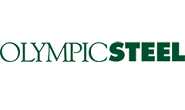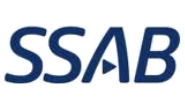Steel Mills

Olympic CEO Bullish on Demand Despite "High-Wire Act" of Prices
Written by Michael Cowden
January 22, 2021
Olympic Steel’s chief executive officer is bullish on steel demand in the months ahead despite the risks posed by higher prices.
That optimism stems from the Biden administration indicating that it plans to spend big on infrastructure and from the prospect of the U.S. getting a better handle on the Covid-19 crisis, Olympic Steel CEO Richard Marabito said in an exclusive interview with Steel Market Update.
It also comes from the ability of the service center industry to adapt to any surprises that might come its way–and with leaner inventories than in past pricing cycles, he said.
“I think we saw a pretty good recovery into the fourth quarter post-Covid, and we are starting out the year pretty similar to what the demand trends were in the fourth quarter,” Marabito said.![]()
In most years, that might not be much to boast about. But the fourth quarter of 2020 was not a normal quarter. And December, which tends to be a slow month for service centers, last year saw strong shipping volumes, he noted.
But high prices mean that everyone in the metals supply chain is watching for any cracks and planning for what to do next should they appear. “Obviously when you get the prices at this level, it’s sort of a high-wire act. From a risk-management perspective, everybody’s antennas are focused,” Marabito said.
Steel Market Update’s price for hot-rolled coil, for example, stands at an all-time high of $1,130 per ton ($56.50/cwt), up 5.6% from a 2008 peak of $1,070 per ton and up 156.8% from a 2020 low of $440 per ton.
That more than doubling of prices has made credit a central issue to the steel market. “Wherever you sit in the supply chain, whether you are a service center or the customer of a service center, if you’re buying the same amount of steel, you’ve got twice the price,” Marabito said.
Most service centers have asset-based loans (ABLs) that are based on a percentage of receivables and inventories. Larger, more sophisticated companies have mostly been able to navigate the credit squeeze by closely managing inventory turns and watching receivables and payables like hawks.
The problem is more for smaller service centers, even well managed ones and not just ones that might have let inventories swell or debts pile up. “If you have a loan at size X and you were borrowing at 90% of X, even under an ABL you may be bumping up against the line size,” he said. “Those are real issues in the supply chain when we get prices that move up this fast: the ability of everyone to fully participate given credit constraints.”
Perhaps a bigger concern than credit and higher prices is spot availability. “The first part of it is having the access to the steel when it gets tight. That ends up being first and foremost,” Marabito said.
Olympic, like other steel suppliers, has been careful to make sure it meets its contractual obligations to original equipment manufacturers (OEMs). But that has left few tons available for spot buyers. “Where you see the squeeze is in the spot business. There is just not a lot of inventory out there available on the spot marketplace. That’s where I see the squeeze happening,” he said.
Long mill lead times have made the situation more difficult to manage. And the supply-driven nature of the current runup in prices is more worrisome than an uptrend driven primarily by strong demand. If there is a saving grace, it is that service centers have been running lean. “It doesn’t look like we will have some of the service center problems that happened in some prior runups where there was a lot of inventory in the supply chain,” Marabito said.
With U.S. prices high, imports have re-entered the conversation. Yet it’s by no means certain that foreign steel will flood in and send prices downward as has happened in the past. “When you get to the prices we’re at, the risk for that becomes much greater,” he said. “Do you really want to be making commitments today at today’s pricing for metal that … you will have to sell months from now?”
Olympic remains optimistic despite that litany of worries because the Biden administration might spend trillions on infrastructure–and might have bi-partisan support for doing so. “I am just a big proponent to push for an infrastructure spend,” Marabito said. “For the steel industry, it will be phenomenal. And it will be great for the country.”
The million-dollar question remains how to pay for such spending. “But you know what? We’re throwing trillions around like we used the throw billions around,” he said, noting that the stimulative impact on the economy and jobs from infrastructure spending would be greater than that from direct payments to individuals.
And while the Biden administration might not always pursue an agenda that is good for business, it has at least demonstrated its intent to be transparent. “Whether you agree with policies or disagree with policies, at least if you know where you’re going and what the plan is for the next year or two,” that should allow businesses to adapt and plan accordingly, Marabito said.
Other reasons for optimism: The U.S. potentially rolling out a successful Covid-19 vaccine campaign. “At least we’ve got some light at the end of the tunnel, and hopefully by summer that allows our economy to pick up a little bit too,” he said.
There are even silver linings in issues such as the microchip shortage currently slowing production at major automakers. That shortage, like the pandemic, might encourage manufacturers to re-think the wisdom of long, complicated international supply chains. “If you don’t have the chip, you can’t sell the car,” Marabito said. “Hopefully that will bring a little more metals business into the U.S. as OEMs and supply chains really, from a risk perspective, take a look of that.”
By Michael Cowden, michael@steelmarketupdate.com

Michael Cowden
Read more from Michael CowdenLatest in Steel Mills

Algoma to conclude planned plate mill outage at month’s end
Algoma Steel Inc. expects to wrap up a previously announced outage on its plate mill by the end of this month, a company spokeswoman said. The outage is part of the Canadian flat-rolled steelmaker’s $130 million CAD ($95 million USD) modernization project. It began in mid-April.

SDI execs detail April outage at Sinton, address ‘robust’ HR-CR spread
Steel Dynamics Inc. (SDI) executives said the company's Sinton, Texas, sheet mill should be able to increase melt capacity after an outage earlier this month. Sinton should see "additional improvements in production" after taking "several maintenance days in April," Barry Schneider, SDI president and COO, said in a Q1 earnings conference call on Wednesday.

SSAB Americas Q1 results hit by lower plate prices, demand
Lower demand and prices for steel plate impacted SSAB Americas’ results in the first quarter, Swedish parent company SSAB said in its Q1'24 interim report.

Cliffs working on a transforming solution for Weirton mill
Cleveland-Cliffs is working on a solution for its recently idled mill in Weirton, W.Va., that will address pent-up demand for transformers, increase the need for its electrical steel, and get its workforce back to work.

Cliffs being selective with auto clients on strength in sector
With strength in the sector and customers needing the product it produces, Cleveland-Cliffs’ chief executive says the company will be more selective with the automotive customers it chooses to serve.
